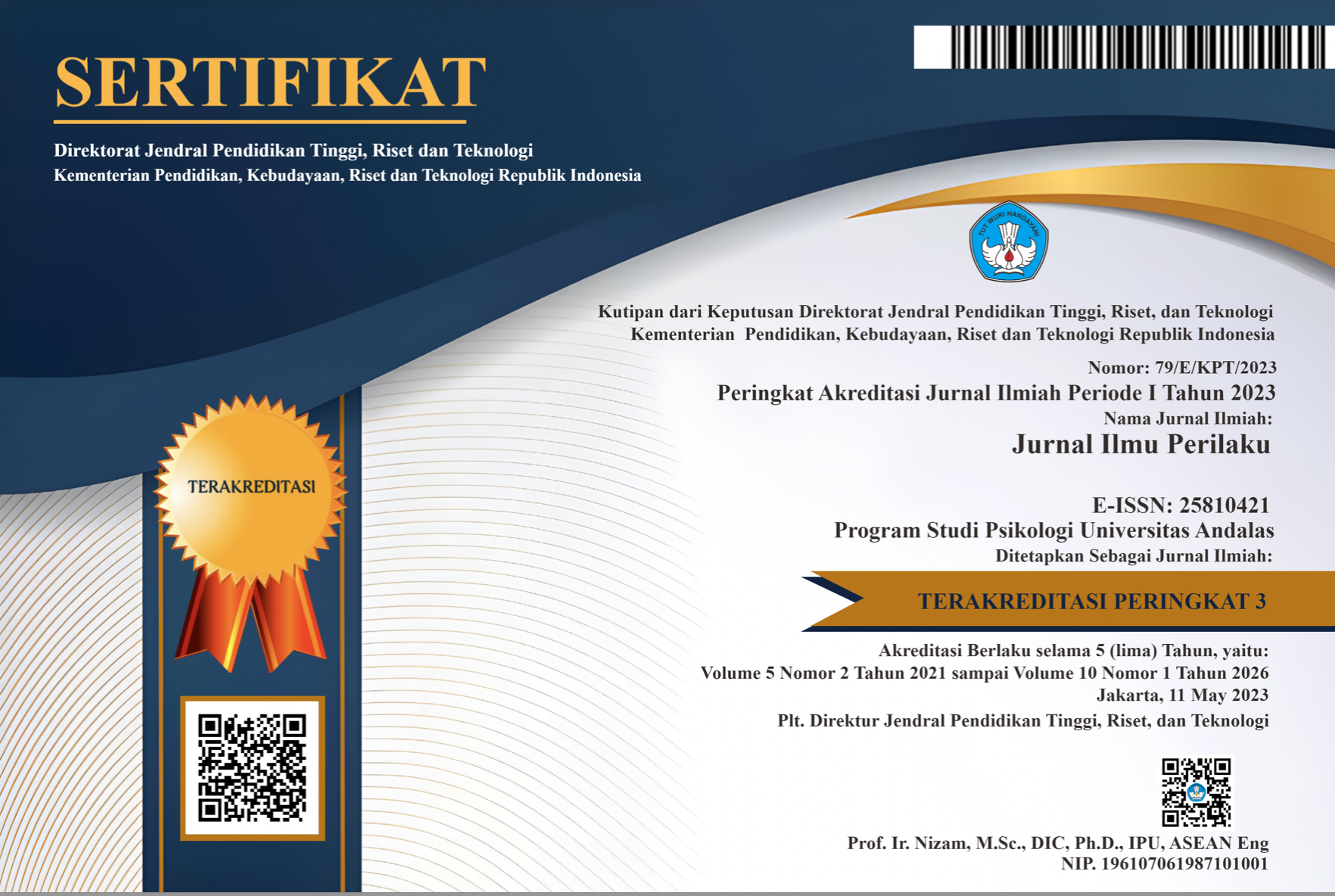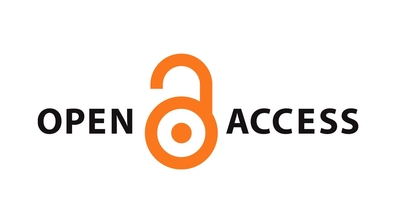Budaya dan Perilaku Berjudi: Kasus Tajen Di Bali
Abstract
Gambling has long been comprehended as activities involving money wagering or other belongings for random or uncertain outcomes and causes the risk to chains of problems to the individuals, ranged from financial problems, psychological problems, and interpersonal problems. Maladaptive gambling behavior has also been classified in DSM-IV, named as pathological gambling (312.31), and is considered as illegal practice in many countries, including Indonesia. Gambling activities as a tradition also exist in various cultures, such as ‘tajen’ in Bali, Indonesia. ‘Tajen’ is a cockfighting tradition and a part of religious rituals in Bali. This has resulted in a unique problem regarding to its cultural and legal context, while the risk to psychological problems (such as pathological gambling) cannot be disregarded. Using the case of Tajen in Bali, this paper also discusses the influences of culture to gambling behavior and its legal complexity.
Downloads
References
Abt, V., McGurrin, M. C., & Smith, J. F. (1985). Toward a synoptic model of gambling behavior. Journal of Gambling Behaviour, 1, 79 – 88.
American Psychiatric Association. (1994). Diagnostic and statistical manual of mental disorders (4th Ed.). Washington, DC: American Psychiatric Association.
Andrianto, H. (2003). Perjudian sabung ayam di Bali. Tesis. Jakarta: Program Studi Kajian Ilmu Kepolisian, Program Pascasarjana, Universitas Indonesia.
Bali Post. (2008a, 30 Juni). Polisi bubarkan tajen di Mungguna Tihingan. Bali Post. Diakses dari http://www.balipost.co.id/mediadetail.php?module=detailberita& kid=2&id=1466
Bali Post. (2009, 5 September). Setahun Bali mandara: Pedanda Gunung tanya janji legalkan tajen. Bali Post. Diakses dari http://www.balipost.co.id/mediadetail.php?module=detailberita&kid=10&id=19310
Bali Post. (2008b, 17 September). Polsek Gianyar bubarkan tajen. Bali Post. Diakses dari http://www.balipost.co.id/mediadetail.php?module=detailberita&kid=2&id =4950
Bali Post. (2010a, 17 Juni). Kapolres diadili: DPRD minta tindak tegas tajen & kafe. Bali Post. Diakses dari http://www.balipost.co.id/mediadetail.php? module=detailberita&kid=2&id=37257
Bali Post. (2010b, 13 September 2010). Tajen diperdakan, Bali pulau judi. Bali Post. Diakses dari http://www.balipost.co.id/mediadetail.php?module=detailberita& kid=10&id=41679
Bali Post. (2010c, 14 September 2010). Tajen tak perlu diperdakan. Bali Post. Diakses dari http://www.balipost.co.id/mediadetail.php?module=detailberita& kid=10&id=41747
Binde, P. (2005). Gambling across cultures: Mapping worldwide occurrence and learning from ethnographic comparison. International Gambling Studies, 1(6), 1-27.
Breen, H. (2011). Risk and protective factors associated with gambling consequences for indigenous Australians in North Queensland. International Journal of Mental Health and Addiction, 1-15. doi: 10.1007/s11469-011-9315-8
Culin, S. (1924). The game of ma-jong. Brooklyn Museum Quarterly, xi, 153-168.
Departemen Pendidikan dan Kebudayaan. (1984). Permainan rakyat daerah Bali. Jakarta: Departemen Pendidikan dan Kebudayaan Indonesia.
Devereux, E.C. (1979). Gambling. In J.J. Ponzetti. The International Encyclopedia of the Social Sciences, Vol. 17. New York: Macmillan.
Dickerson, M., Allcock, C., Blaszczynski, A., Nicholls, B., Williams, J., & Maddern, R. (1996). A preliminary exploration of the positive and negative impacts of gambling and wagering on Aboriginal people in NSW. Sydney: Australian Institute of Gambling Research.
Geertz, C. (1973). The Interpretation of Cultures. In C. Geertz. Notes on the Balinese cock fight (pp. 412-453). New York, NY: Basic Books.
Hunter, E., & Spargo, R. (1988). What’s the big deal? Aboriginal gambling in the Kimberley region. The Medical Journal of Australia, 149, 668–672.
Hofstede, G., Hofstede, G.J. (2005). Cultures and organizations : Software of the mind. New York: McGraw-Hill.
Kaare, P.R., Mõttus, R., & Konstabel, K. (2009). Pathological gambling in Estonia: Relationships with personality, self-esteem, emotional states and cognitive ability. Journal of Gambling Studies, 25(3), 377-390. doi: 10.1007/s10899-009-9119-y
McDonald, H., & Wombo, B. (2006). Indigenous gambling scoping study: A summary. Darwin: Charles Darwin University.
National Research Council. (1999). Pathological gambling: A critical review. Washington, DC: National Academy Press.
Raylu, N., & Oei, T. P. S. (2002). Pathological gambling: A comprehensive review. Clinical Psychology Review, 22, 1009-1061.
Raylu, N., & Oei, T. P. S. (2004). Role of culture in gambling and problem gambling. Clinical Psychology Review 23, 1087-1114.
Schreiber, L., Odlaug, B. L., Suck Won, K., & Grant, J. E. (2009). Characteristics of pathological gamblers with a problem gambling parent. [Article]. American Journal on Addictions, 18(6), 462-469. doi: 10.3109/10550490903206007
Tang, C.S., Wu, A.M.S., & Tang, J.Y.C. (2006). Gender differences in characteristics of Chinese treatment-seeking problem gamblers. Journal of Gambling Studies. doi: 10.1007/s10899-006-9054-0
Thomson, W.N. (2010). The international encyclopedia of gambling. Santa Barbara, California: ABC-CLIO, LLC.
Westermeyer, J. (1999). The role of cultural and social factors in the cause of addictive disorders. The Psychiatric Clinics of North America, 22, 253-273.
Williams, R. J., & Wood, R. T. (2007, July 20). Internet Gambling: A Comprehensive Review and Synthesis of the Literature. Report prepared for the Ontario Problem Gambling Research Centre, Guelph, Ontario, CANADA.
Young, M., & Stevens, M. (2009). Reported gambling problems in the Indigenous and total Australian population. Melbourne: Gambling Research Australia.
The non-commercial use of the article is governed by the Creative Commons Attribution license as currently displayed on Creative Commons Attribution-NonCommercial-ShareAlike 4.0 International License.
JIP's spirit is to disseminate articles published are as free as possible. Under the Creative Commons license, JIP permits users to copy, distribute, display, and perform the work for non-commercial purposes only. Users will also need to attribute authors and JIP on distributing works in the journal.
Please find the rights and licenses in Jurnal Ilmu Perilaku (JIP).
- License
The non-commercial use of the article will be governed by the Creative Commons Attribution license as currently displayed on Creative Commons Attribution-NonCommercial-ShareAlike 4.0 International License.
- Author’s Warranties
The author warrants that the article is original, written by stated author(s), has not been published before, contains no unlawful statements, does not infringe the rights of others, is subject to copyright that is vested exclusively in the author and free of any third party rights, and that any necessary written permissions to quote from other sources have been obtained by the author(s).
- User Rights
JIP's spirit is to disseminate articles published are as free as possible. Under the Creative Commons license, JIP permits users to copy, distribute, display, and perform the work for non-commercial purposes only. Users will also need to attribute authors and JIP on distributing works in the journal.
- Rights of Authors
Authors retain the following rights:
- Copyright, and other proprietary rights relating to the article, such as patent rights,
- The right to use the substance of the article in future own works, including lectures and books,
- The right to reproduce the article for own purposes, provided the copies are not offered for sale,
- The right to self-archive the article.
- Co-Authorship
If the article was jointly prepared by other authors, the signatory of this form warrants that he/she has been authorized by all co-authors to sign this agreement on their behalf, and agrees to inform his/her co-authors of the terms of this agreement.
- Termination
This agreement can be terminated by the author or JIP upon two months’ notice where the other party has materially breached this agreement and failed to remedy such breach within a month of being given the terminating party’s notice requesting such breach to be remedied. No breach or violation of this agreement will cause this agreement or any license granted in it to terminate automatically or affect the definition of JIP.
- Royalties
This agreement entitles the author to no royalties or other fees. To such extent as legally permissible, the author waives his or her right to collect royalties relative to the article in respect of any use of the article by JIP or its sublicensee.
- Miscellaneous
JIP will publish the article (or have it published) in the journal if the article’s editorial process is successfully completed and JIP or its sublicensee has become obligated to have the article published. JIP may conform the article to a style of punctuation, spelling, capitalization, referencing and usage that it deems appropriate. The author acknowledges that the article may be published so that it will be publicly accessible and such access will be free of charge for the readers.










